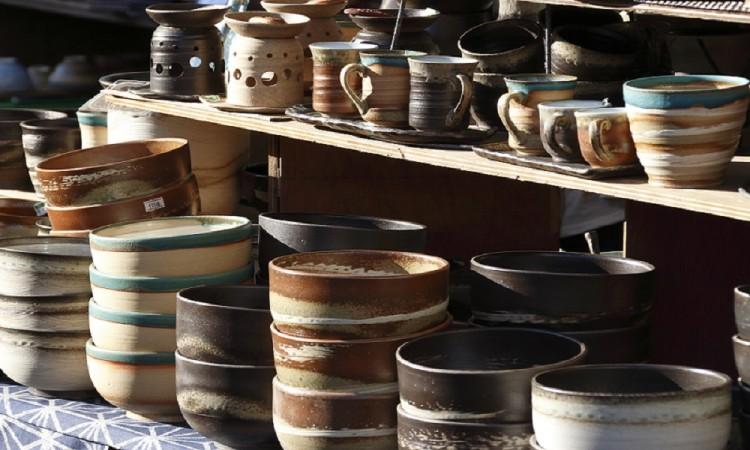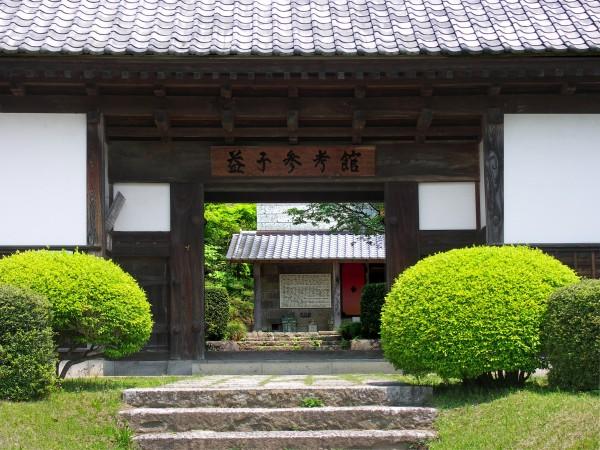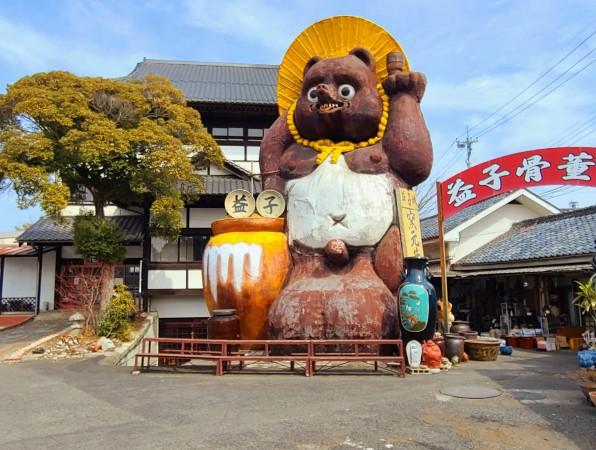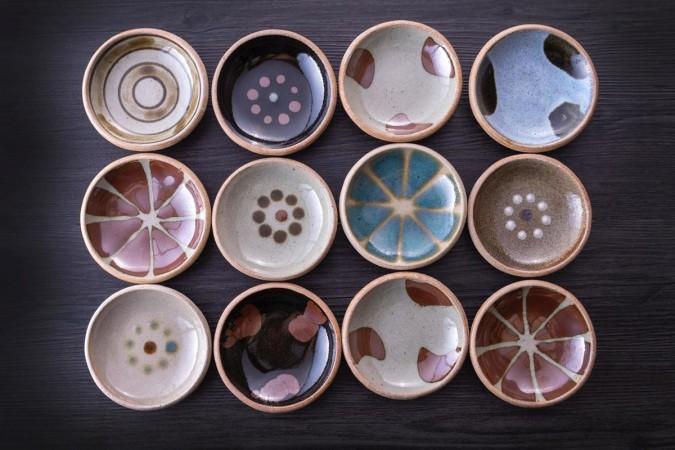Explore Mashiko - Japan Travel, Asia
Hide away in the gentle hills of Tochigi Prefecture, Mashiko is more than a stop on a map, it’s a living gallery of clay, craft, and community. Known worldwide for its Mashiko-yaki pottery, this charming rural town draws travelers seeking hands-on creativity and a slower pace of life. Here, kiln smoke curls into blue skies, and artisan shops spill treasures onto narrow streets. Only a few hours from Tokyo, Mashiko offers the perfect escape for lovers of traditional Japanese culture, authentic local food, and countryside landscapes.
Population: Approximately 22,000 in 2020.
Economy: Mashiko’s economy thrives on its renowned pottery industry, attracting both domestic and international buyers. Tourism plays a vital role, fueled by pottery fairs, local crafts, and cultural events.
Landmarks: Famous for the Mashiko Pottery Museum, Pottery Street, and the Saimyoji Temple.
Japan

Overview of Mashiko
History & Cultural Influence
Mashiko’s pottery legacy began in the mid-19th century, when local clay was first shaped into simple, durable wares for everyday use. The town’s kilns have weathered change, from traditional wood-fired noborigama kilns to modern gas-fired ones, but the spirit remains the same: pottery is a living tradition, passed from hand to hand. Today, Mashiko is home to hundreds of artisans whose works range from rustic tableware to bold contemporary pieces. Each carries the mark of the town’s soil, its culture, and its deep respect for craft.
Interaction with the Locals
One of Mashiko’s greatest charms is the warmth of its people. Step into a pottery workshop, and you’ll often be greeted by the artists themselves, sleeves rolled up, hands in clay. They’ll guide you through shaping your own bowl or cup, sharing stories about their craft as you work.

Top Attractions in Mashiko
Mashiko Pottery Museum (Mashiko Sankokan Museum)
A must for ceramic enthusiasts, the Mashiko Pottery Museum is where the town’s story comes alive. Its collection showcases masterpieces by Shoji Hamada, alongside works by his contemporaries and modern successors. Exhibits change seasonally, so each visit offers fresh inspiration. Outside, you’ll find preserved kilns and the potter’s former home, offering insight into traditional ceramic production.
Pottery Street (Jonaizaka)
This lively stretch is the beating heart of Mashiko’s craft scene. Pottery Street is lined with galleries, workshops, and family-run stores, each brimming with Mashiko-yaki in every glaze and style imaginable. Many shops welcome visitors to observe potters shaping clay at the wheel. Come during the Mashiko Pottery Fair, and the street transforms into an open-air market with hundreds of stalls and bustling crowds.
Saimyoji Temple
A peaceful escape from the bustle of pottery shopping, Saimyoji Temple dates back centuries and reflects the deep spiritual roots of the region. In spring, the temple’s approach is framed by blooming cherry trees, while autumn paints the grounds in gold and crimson. Stone lanterns, moss-covered steps, and a gentle breeze make it a serene spot for quiet reflection or a leisurely stroll.
Mashiko Ceramic Art Messe
This cultural complex blends museum, gallery, and event space into one creative hub. The Mashiko Ceramic Art Messe hosts rotating exhibitions from both Japanese and international artists, often featuring experimental and contemporary takes on ceramics. Outdoor sculptures dot the grounds, and the airy galleries make it a perfect spot to enjoy art in a relaxed, open setting. If you visit during special events, you may even catch live demonstrations or artist talks.

Must-Try Dishes in Mashiko
- Mashiko Soba: Made from locally grown buckwheat, Mashiko soba delivers a nutty aroma and firm, satisfying texture. Enjoy it cold with a dipping sauce (zarusoba) in summer or steaming hot in a rich broth during winter. Seasonal toppings like mountain vegetables, mushrooms, or tempura enhance its flavor.
- Tochigi Wagyu Beef: Raised in lush Tochigi pastures, Tochigi wagyu beef is prized for its tenderness and marbled richness. Whether grilled over charcoal, simmered in sukiyaki, or swirled through a shabu-shabu hotpot, it melts in the mouth and leaves a savory sweetness.
- Tochigi Strawberries: Tochigi is Japan’s leading strawberry-producing region, and Mashiko offers the perfect setting to taste them at their freshest. Try Tochiotome or Skyberry varieties in parfaits, strawberry shortcake, ichigo daifuku, or as part of a pick-your-own farm experience.
- Seasonal Vegetable Dishes: Mashiko’s rural location means farm-to-table dining is the norm. Expect dishes like miso-glazed eggplant, simmered pumpkin, burdock root stir-fries, and daikon radish stews. Many recipes come from local farm families and change with the harvest.
- Utsunomiya Gyoza: Although famous in nearby Utsunomiya, these pan-fried dumplings are also popular in Mashiko eateries. Filled with pork, cabbage, garlic, and chives, they’re crisp on the outside and juicy inside — a satisfying snack between pottery shopping.
- Yuba Dishes: Drawn from nearby Nikko’s culinary traditions, yuba (tofu skin) is served fresh, fried, or simmered in light broth. It’s a delicate, protein-rich specialty with a subtle soy flavor.
- Oyaki: These rustic dumplings, made from buckwheat or wheat dough, are stuffed with seasonal fillings like sweet red bean paste, miso vegetables, or pickled greens, then pan-fried or steamed. They’re a convenient street snack while exploring town.

Festivals & Local Celebrations
Mashiko Pottery Fair (Mashiko Tōki-ichi)
Held twice a year during the Golden Week in spring (late April to early May) and autumn (early November), the Mashiko Pottery Fair is the town’s biggest event. More than 500 stalls fill the streets, selling every type of Mashiko-yaki imaginable, from rustic teacups to contemporary art pieces. Prices range from bargain finds to collector’s items, and many artisans debut new designs here. The festive atmosphere is amplified by live music, food stalls, and pottery demonstrations.
Tanabata Festival
In July, Mashiko joins the nationwide celebration of Tanabata (Star Festival). Colorful paper wishes decorate bamboo poles, and evening lanterns light up the streets. Local shops stay open late, and some host mini pottery-painting sessions themed around the festival.
New Year’s Kiln Lighting
In early January, certain workshops hold ceremonial kiln lightings to mark the start of the creative year. Visitors are welcome to watch the process, which often includes sake toasts and blessings for good fortune.

What to Do in Mashiko
- Pottery Workshops: The heart of Mashiko’s tourism lies in its pottery-making experiences. Dozens of studios offer classes where you can throw clay on a wheel, hand-shape small bowls, or paint pre-made ceramics. Sessions are beginner-friendly, and many include firing and shipping your creation home as a keepsake.
- Countryside Cycling & Walking: Rent a bicycle or follow walking paths through rice paddies, bamboo groves, and forested hills. The slower pace lets you notice seasonal changes, including cherry blossoms in spring, green fields in summer, and fiery foliage in autumn.
- Visiting Local Farms: Some farms open their gates to visitors for hands-on agricultural activities: strawberry picking in winter and spring, vegetable harvesting in summer, or chestnut gathering in autumn. It’s a chance to connect with the rural lifestyle that supports Mashiko’s community.
- Relaxing in Onsens: While Mashiko itself is known for pottery, nearby towns offer soothing onsen hot springs. A short bus or car ride takes you to open-air baths with views of the countryside, a perfect way to unwind after a day of exploring.
Shopping in Mashiko
- Mashiko Pottery Shops: From earthy rustic bowls to sleek contemporary tea sets, Mashiko-yaki is the star of the town’s shopping scene. Prices vary widely, so you can find both affordable everyday pieces and investment-worthy art. The twice-yearly Mashiko Pottery Fair is ideal for variety and discounts.
- Artisan Crafts Stores: Beyond pottery, Mashiko offers handwoven textiles, lacquerware, woodcrafts, and glass art. Many items come from artisans who blend traditional techniques with modern aesthetics, making them unique gifts.
- Antique & Second-Hand Shops: Some shops specialize in vintage pottery and second-hand tableware, perfect for collectors seeking pieces with history and patina.

Weather in Mashiko: Best Time to Visit
Spring (March – May)
Mild temperatures and blooming cherry blossoms make spring one of the best times to visit. Average temperatures range from 10°C to 20°C (50°F–68°F), with nights remaining cool in early spring. The Mashiko Pottery Fair during Golden Week draws large crowds, and countryside trails are alive with fresh greenery. Light layers and a jacket are ideal for daytime exploring.
Summer (June – August)
The weather turns hot and humid, with averages from 25°C to 30°C (77°F–86°F) and occasional afternoon showers. This is strawberry season and vegetable harvest time. Nature trails are lush, and cycling through green rice paddies offers a picturesque escape. Bring breathable clothing, sunscreen, and a hat for sunny days.
Autumn September – November)
Cool, crisp air and vibrant red, orange, and yellow foliage make autumn in this place magical. The temperatures are mild, averaging between 15°C and 25°C (59°F–77°F). The autumn pottery fair in early November pairs perfectly with seasonal dishes like chestnut rice and mushroom hotpot. A light coat or sweater is enough for most days.
Winter (December – February)
Chilly but rarely extreme, with average temperatures ranging from 0°C to 10°C (32°F–50°F), winter in Mashiko is cozy and calm. Workshops offer warm indoor activities, and nearby hot springs are particularly inviting. Expect occasional frost in the mornings, and pack warm layers and gloves if you plan to explore outdoors.

Essential Travel Information
Getting Around Mashiko
- By train and bus: Take the JR Utsunomiya Line from Tokyo to Utsunomiya Station (approx. 1 hr 50 mins). From Utsunomiya, transfer to a bus bound for Mashiko (approx. 1 hr).
- By car: Renting a car is convenient for visiting multiple pottery studios and rural attractions in one day.
- By bicycle: Some guesthouses and rental shops offer bicycles, making it easy to explore Mashiko’s pottery districts and countryside at a leisurely pace.
- On foot: Mashiko’s main pottery street is pedestrian-friendly and best enjoyed on foot, especially during the Pottery Fair.
- Event transportation tips: During the Mashiko Pottery Fair, additional shuttle buses and temporary parking areas are provided to accommodate visitors.
ATM & Banking Services
Several ATMs, located in convenience stores such as 7-Eleven, Lawson, and FamilyMart, accept major international cards like Visa, MasterCard, and Plus/Cirrus networks. Japan Post Bank ATMs can be found at local post offices, offering English-language support for withdrawals. While some shops accept credit cards, many pottery studios and smaller restaurants are cash-only.
Where to Stay in Mashiko
- Traditional inns (ryokan): Experience Japanese-style rooms with tatami flooring, futon bedding, and seasonal local meals. Some offer onsen (hot spring) baths for relaxation.
- Minshuku (family-run guesthouses): Affordable stays with a homey atmosphere, with hosts often preparing homemade breakfast or dinner using local ingredients.
- Modern hotels: Limited in number but available in nearby towns such as Moka or Utsunomiya for those who prefer Western-style comfort.
- Farm stays: Stay on working farms to enjoy rural life, pottery workshops, and farm-to-table meals. Ideal for travelers seeking immersive cultural experiences.
Articles for you

Explore Yala National Park - Sri Lanka Travel, Asia
Tucked away in Sri Lanka’s southeastern corner, Yala National Park is where wild nature meets deep tradition. Known worldwide for its leopard population, the park is also home to elephants, sloth bears, crocodiles, and hundreds of bird species. Beyond wildlife, Yala opens doors to a cultural landscape dotted with ancient temples, Buddhist ruins, and coastal villages. For travelers seeking more than just a safari, Yala offers a chance to explore eco-tourism, local communities, and sacred heritage sites.
Population: The Yala National Park area doesn’t have a human population.
Economy: The economy around Yala National Park thrives on a blend of eco-tourism, agriculture, and local services. Safari tours, eco-lodges, and cultural experiences drive steady income for nearby towns like Tissamaharama and Kataragama, supporting thousands of families.
Landmarks: Famous for Block I of Yala and wildlife encounters, including elephants, sloth bears, crocodiles, and exotic bird species.

Explore Galle - Sri Lanka Travel, Asia
Nestled on Sri Lanka’s southern coastline, Galle is a vibrant city where history meets the sea. Its cobbled streets, colonial architecture, and serene beaches make it a must-visit destination for travelers seeking a blend of culture, adventure, and relaxation. A UNESCO World Heritage site, Galle captivates visitors with its Dutch Fort, bustling markets, and friendly locals. Whether you’re exploring the ramparts at sunset or savoring fresh seafood by the shore, Galle promises an unforgettable journey into Sri Lanka’s heritage.
Population: Approximately 113,000 in 2023.
Economy: Galle’s economy thrives on tourism, trade, and fisheries. The city’s historic fort, colonial architecture, and coastal charm draw thousands of international visitors each year, making tourism its main economic driver. Fishing remains vital for local livelihoods, supplying fresh seafood across the region.
Landmarks: Famous for the Galle Fort, Dutch Reformed Church & Maritime Museum, and Unawatuna Beach.

Explore Bentota - Sri Lanka Travel, Asia
Nestled along Sri Lanka’s southwestern coast, Bentota is a tropical paradise that blends golden beaches, vibrant culture, and thrilling adventures. Famous for its calm waters, luxury resorts, and scenic river estuary, Bentota has become a top destination for travelers seeking both relaxation and authentic experiences. From serene beach walks at sunrise to adrenaline-pumping water sports, this coastal town offers a perfect balance of leisure and exploration. With its proximity to Colombo and Galle, Bentota is easy to reach, making it an ideal stop for both short escapes and extended holidays.
Population: Approximately 37,000 in 2023.
Economy: Bentota’s economy thrives mainly on tourism, which drives local businesses such as hotels, restaurants, and wellness retreats. The town also benefits from fishing, coconut cultivation, and handicrafts like wood carving and batik textiles. Many residents rely on the growing demand for water sports and Ayurvedic treatments, making tourism the backbone of both income and employment in the area.
Landmarks: Famous for Bentota Beach, Bentota River Safari, and Kande Vihara Temple.

Explore Mirissa - Sri Lanka Travel, Asia
Mirissa is a charming coastal town on Sri Lanka’s southern shoreline. Known for its golden beaches, turquoise waters, and vibrant marine life, it has become a must-visit stop for travelers exploring the island. Many come for whale watching, surfing, and sunset views at Coconut Tree Hill, but Mirissa offers much more than postcard beauty. The fishing boats you see anchored by the bay carry generations of stories. Local traditions, delicious cuisine, and a laid-back rhythm of life shape every visitor’s experience.
Population: Approximately 4,700 in 2023.
Economy: Mirissa’s economy is largely shaped by its coastal location. Fishing has long been the backbone of local livelihoods, with generations relying on the Indian Ocean for income. In recent decades, tourism has become the main driver of growth, thanks to whale watching, surfing, and beachside hospitality.
Landmarks: Famous for Mirissa Beach, Coconut Tree Hill, and Parrot Rock Bridge.

Explore Nuwara Eliya - Sri Lanka Travel, Asia
Tucked away in the Central Highlands of Sri Lanka, Nuwara Eliya is often called “Little England”. With its rolling tea plantations, cool misty mornings, and colonial charm, this mountain town feels like a step into another world. Travelers come here to breathe fresh air, walk through flower gardens, sip the finest Ceylon Tea, and enjoy a pace of life far from the island’s busy cities. Whether you’re drawn by scenic landscapes, heritage architecture, or the warmth of its people, Nuwara Eliya is a destination that blends nature, culture, and history in perfect harmony.
Population: Approximately 781,000 in 2023.
Economy: Nuwara Eliya’s economy thrives mainly on tea production, as it sits in the heart of Sri Lanka’s central highlands, famous worldwide for Ceylon Tea. The city also benefits from a growing tourism industry, attracting visitors with its colonial charm, cool climate, and scenic landscapes.
Landmarks: Famous for Gregory Lake, Hakgala Botanical Garden, and Victoria Park.

Explore Sukau - Malaysia Travel, Asia
Nestled on the banks of the Kinabatangan River in Sabah, Malaysian Borneo, Sukau is a destination where wildlife, culture, and conservation come together. Known as one of Asia’s top spots for river safaris and eco-tourism, this quiet village offers a front-row seat to encounters with Bornean orangutans, pygmy elephants, proboscis monkeys, and exotic birdlife.
Population: Approximately 1,400 in 2019.
Economy: Sukau’s economy is shaped by its riverine location and natural resources. Traditionally, the Orang Sungai community relied on fishing, small-scale farming, and forest gathering for their livelihood. Today, the village has shifted toward eco-tourism, with river cruises, jungle trekking, and homestays providing income.
Landmarks: Famous for the Kinabatangan River cruises, Gomantong Caves, and Ox-bow lakes and wetlands.
